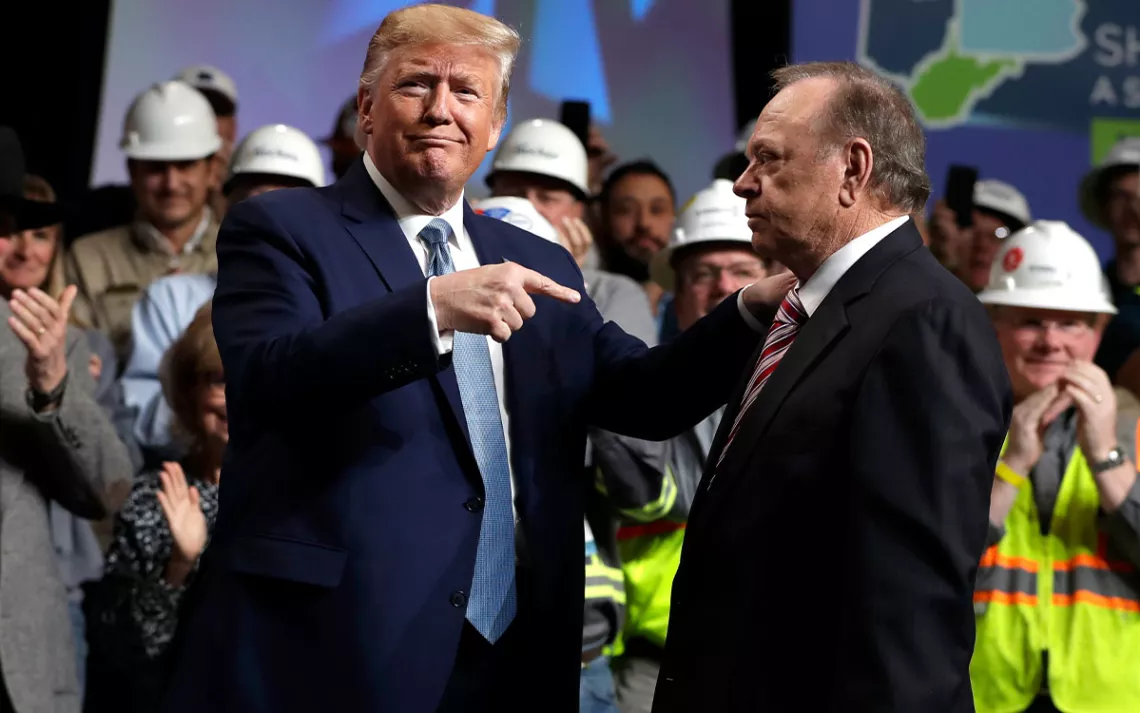Trump’s Oil Deal - Pandemic Decision and Years of Inflation
Trump brokered an agreement with OPEC and Russia to cut oil production by nearly 10 million barrels per day, a record reduction reported by Reuters. This intervention stabilized the market, relieving U.S. energy producers struggling to stay afloat.

As Donald Trump prepares to step back into the White House this January, Americans are still grappling with economic challenges that trace back to his earlier presidency. Among these challenges is inflation, a multifaceted issue partly tied to his pivotal decision in 2020: negotiating a historic oil production cut. While this move was initially seen as a win for the struggling energy industry, its ripple effects have burdened consumers in ways few anticipated.
The Deal That Altered the Energy Landscape
In the early months of the COVID-19 pandemic, global oil demand collapsed, sending prices into freefall. By April 2020, crude oil prices had dropped so low that producers faced significant financial losses. In response, Trump brokered an agreement with OPEC and Russia to cut oil production by nearly 10 million barrels per day, a record reduction reported by Reuters. This intervention stabilized the market, relieving U.S. energy producers struggling to stay afloat.
While the cuts prevented a collapse of the energy sector, they also created a bottleneck in global oil supplies. Harold Hamm, a prominent fracking magnate, and Trump ally, supported the deal, as highlighted by The Independent. However, as oil demand surged in the following years, these cuts contributed to rising prices at the pump and across the economy.
Political Motives and Short-Term Thinking
The oil production deal wasn’t just about economics—it was also a political calculation. Trump faced mounting pressure from industry leaders, including some of his key donors, to take action. According to NBC News, oil executives warned of devastating job losses and economic fallout if prices plummeted. Trump’s decision to intervene may have been driven as much by these pressures as by a desire to stabilize the market.
This transactional approach prioritized the immediate needs of energy executives over the long-term economic stability of everyday Americans. While the deal helped secure jobs in the short term, it left the global oil market unprepared for the eventual recovery in demand.
FACTS AND FOOTAGE: Trump has regularly bragged about the deal at rallies and events. There’s even video: Iowa (35:58), North Carolina (51:19), Georgia (48:51), and Texas (10:02).
The Inflationary Ripple Effect
The consequences of the production cuts became apparent by 2022 when global oil demand rebounded, but supply remained constrained. As noted by USA Today, this imbalance drove gas prices to over $5 per gallon in some parts of the United States. Rising energy costs cascaded through the economy, affecting the price of goods, services, and transportation. Middle- and working-class families, already stretched thin by the pandemic, bore the brunt of this inflationary pressure.
While Trump and his supporters often point to pandemic-related spending and supply chain disruptions as the primary drivers of inflation, the effects of his oil deal cannot be ignored. As Bloomberg explains, the artificial scarcity created by the agreement contributed to the imbalance between supply and demand, fueling price increases.
Looking Ahead: Lessons and Accountability
His economic policies warrant close scrutiny as Trump prepares to assume office again. The 2020 oil deal highlights the dangers of focusing on short-term gains without fully considering long-term consequences. While the agreement may have been a lifeline for the energy sector, it also set the stage for inflationary challenges that continue to affect American consumers.
Many factors undoubtedly influence inflation, but this decision underscores the importance of thoughtful and forward-looking leadership. Holding leaders accountable for the broader impact of their actions—not just the immediate outcomes—is essential for navigating complex economic landscapes.
As Trump embarks on his second term, the economic hurdles he faces will, in many ways, reflect the legacy of his earlier choices. Whether he charts a new course or repeats past patterns remains to be seen.
This article is licensed under Creative Commons (CC BY-NC-ND 4.0), and you are free to share and republish under the terms of the license.
At DayMark News, we are committed to exposing the rise of authoritarianism and its threat to democracy. In a time when disinformation spreads like wildfire and democratic institutions face relentless attacks, we need your support to keep the fight alive.
Investigative journalism is our weapon against authoritarian ideologies. We delve deep to uncover the truths others would rather keep hidden, while providing actionable resources to empower individuals like you to defend our democracy.
We believe in transparency, integrity, and the power of a well-informed public. But maintaining a platform dedicated to fearless reporting and mobilization requires resources. We refuse to bow to corporate interests or compromise our mission. That's why we turn to you — our community.
Every donation, big or small, helps us continue our work. With your support, we can produce the in-depth analyses, breaking news, and educational tools needed to resist the rise of extremist movements and protect democratic values for future generations.
This fight belongs to all of us. Together, we can ensure that democracy not only survives but thrives. Please consider making a contribution today to keep DayMark News strong and independent.
Donate Now: Because Democracy Can't Defend Itself.

 Donate
Donate



